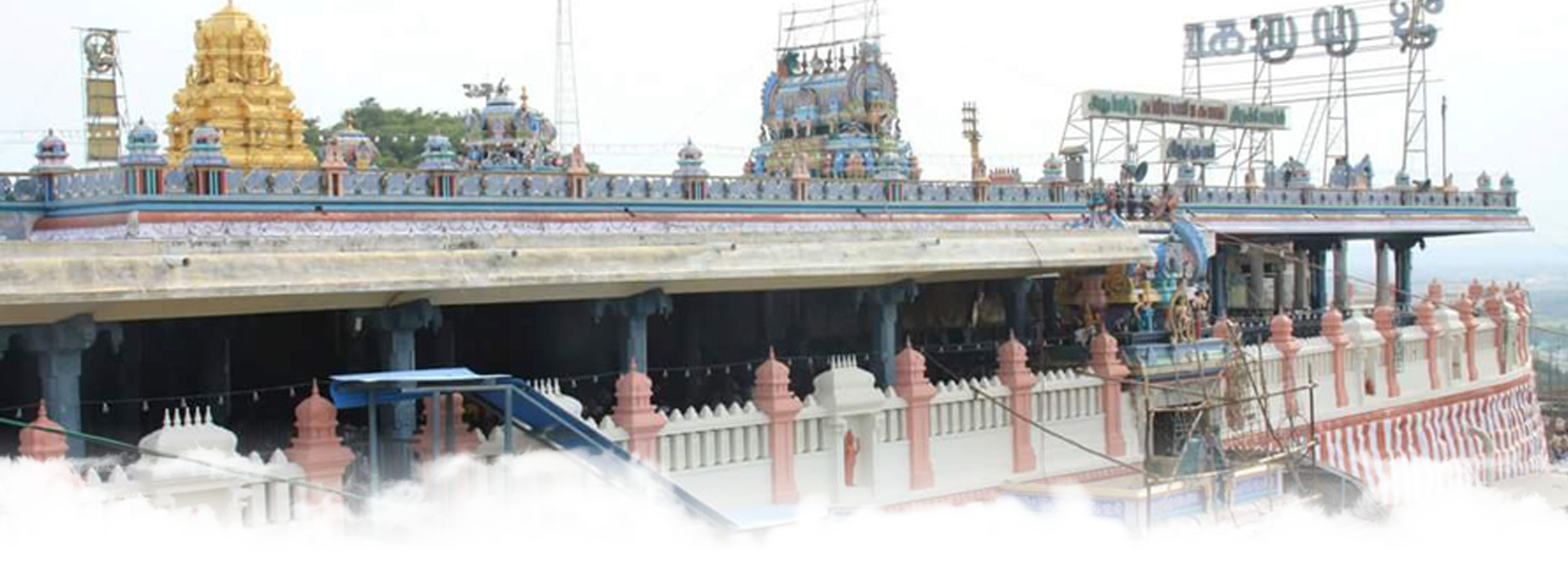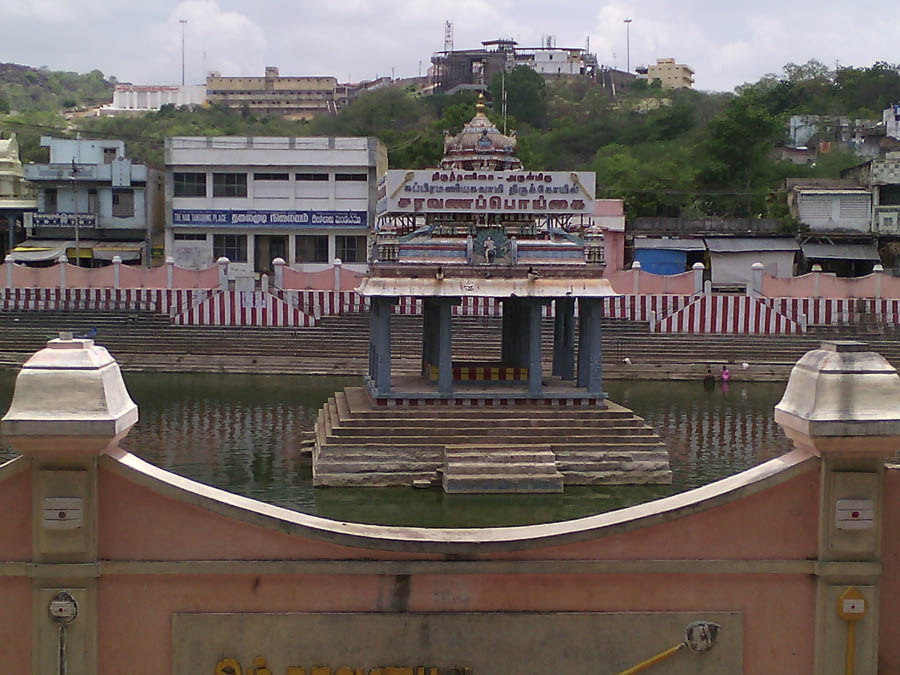
Thiruthani Murugan Temple
History Behind the Temple

Thiruthani set an example of true love, which would be witnessed by generations to come. Even a millennia later, it keeps us reminding again and again that true love knows no bounds. Such is the story of Lord Muruga and his consort Valli.
Valli was a mere human but the love she possessed for her creator knew no limits and was too strong, even for Lord Muruga himself. A baby girl was found amidst the plants by Nambirajan, the head of the Gypsy-Kuravas community, who took her in and brought her up. He named Her Valli after the plants.
Valli was a watch woman in the field of grains who was tasked with driving the birds away. Once an aged hunter (who was a disguised Lord Muruga) caught her attention and moments later, saved her life from a storming elephant. She thanked him but in return was asked by the hunter to marry him. She refused, stating that her love was only for the almighty for she could never love anyone other than him. She successfully passed the ultimate testament. Muruga embraced her and his touch cleared all her illusions. This event is celebrated as Valli Kalyanam.
This makes us understand that the world and the material wealth we are hunting for, is ours but only the enlightened souls understand the truth and are successful in reaching their final destination.
This temple is also mentioned in the Sangam period work Tirumurugaatruppadai, composed by Nakkeerar, which had been patronized by the Vijayanagar rulers, local chieftains and zamindars.
Story Behind the temple
Story has it that Indra, the Lord of heaven, gave his daughter Deivayanai in the marriage to Muruga, and presented his elephant Airavatam as part of his dowry offering. Upon Airavatam’s departure, Indra found his wealth to be waning. Lord Murugan offered to return the elephant, however Indra for whom honor stood before anything else, refused the offer, and rather insisted that the elephant face his direction. Since then every elephant in the temple pointed towards the east.
It is said that Lord Rama, after defeating Ravana, worshipped Lord Shiva at Rameswaram and then came to Tiruthani to attain peace.
Vasuki, The snake king, got his bodily wounds healed, which had been caused during the Samudra Manthan, the churning process in the Milky Ocean to secure the nectar of immortality called Amrita, by the devas and the asuras.
Lord Muruga is said to have shed his anger here at Thiruthani, after finishing the demon
The unique architecture
Religious significance
When Lord Murugan came to this hill after the wedding Goddess Valli at Vallimalai, she requested him to enlighten her on notes of this hill. Lord Murugan replied that if one worshipped Him with heart and soul for five consecutive days in this hill temple, the person would be blessed with the best in his life and after.
In Dwapara Yuga, Arjuna received the blessings of Lord Muruga here, praying to him all his way to the South for Teertha Yatra.
Lord Vishnu got his sacred wheel(chakra) and conch(Shanku) (which were forcibly seized from Him by Tarakasura, the brother of Soorapadma) back after praying to Lord Murugan here.
Lord Indra got back the precious wealth of Deva Loka Sanghaneeti, Padmaneeti, Chintamani seized by Surapadman after worshipping the Lord with three flowers a day, which were obtained from a rare plant Karunkuvalai which was planted at the pool.
Nanda Devi received his peerless initiation to realize the unique relationship between the soul (Jeev Atma) and God (Paramatma) after worshipping Lord Muruga here on the bank of the Nandi River.
On worshipping Lord Murugan at Thanikai, The king of snakes Vasuki got his bodily wounds healed which had been caused by Samudra Manthan.
Sage Agastya Muni was blessed with the rare divine gift of the ever-sweet peerless Tamil language after worshipping the lord here, the beauty of which has been praised and appreciated by all the great saints and poets throughout India.
The land of mystics
Arunagirinathar
Arunagirinathar, among Tiruvannamalai’s most famous saints and a renowned Murugan devotee. He was a Tamil Scholar and a famous poet. Been driven so much by personal gain and pleasure, he spent all his hard-earned money on prostitutes at the house of the devadāsis. Over the years, his body began to lose its energetic youth rapidly, as he contracted numerous diseases.
With future moments that unfolded, Arunagirinathar realized, the path which he was following, taking whatever he fancied for years and not giving a tinker’s curse for those he had hurt in the way, led to only his destruction. Realizing his crimes against the righteous path, he decided to end his life. He begged for forgiveness, then jumped from the top of the temple but was saved by the almighty himself. Murugan stated that life had greater in store for him, for he had to fulfill a divine mission, making others rise through his works.
Once trapped between the Jaws of death and darkness, Arunagirinathar
now found himself in hands, that radiated brilliant rays of brightness and with his own eyes, saw Lord Muruga. Lord Muruga then helped Arunagirinathar with the first sentence of his inspired poetry in his praise, with the world-famous song “Muthai Tharu Patthittirunagai”. He then, embarked on his divine mission to spread the holy word of the Lord all over the land.
Arunagirinathar’s most well-known works have gone in the pages of history within the walls of Thiruthani Murugan. He heaped praise on the soothing and calming atmosphere along with the aura of Lord Murugan he felt working there. Many Siddhas who came in the future, have found their peace of mind here
Intersting Facts
- It is believed that the wedding between Lord Murugan and Valli took place here, in Thiruthani.
- All the elephants in this temple face east.
- It is said Nanda Devi achieved initiation and illumination at Thiruthani, by understanding the relationship between Jeevatma and Paramatma.
- The Thiruthani Saravanapoikai, the sacred pond at the foothill, is highly renowned for its curative effects because the flowing water is enriched with sulfur, iron, and many other minerals. A person is cured of both his physical and mental issues, once he takes a dip there.
- The primary sanctum of the temple is built with one lakh rudrakshas.
- Another interesting fact is that three consecutive days in March allow the rising sun into the primary sanctum. On the first day, it touches the feet of the primary deity, while the second day it falls on its heart, and on the final day, it covers the Head.

